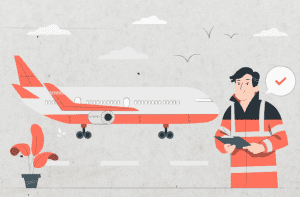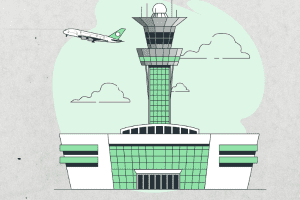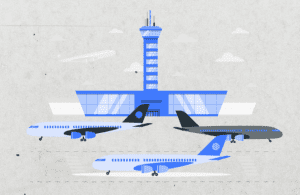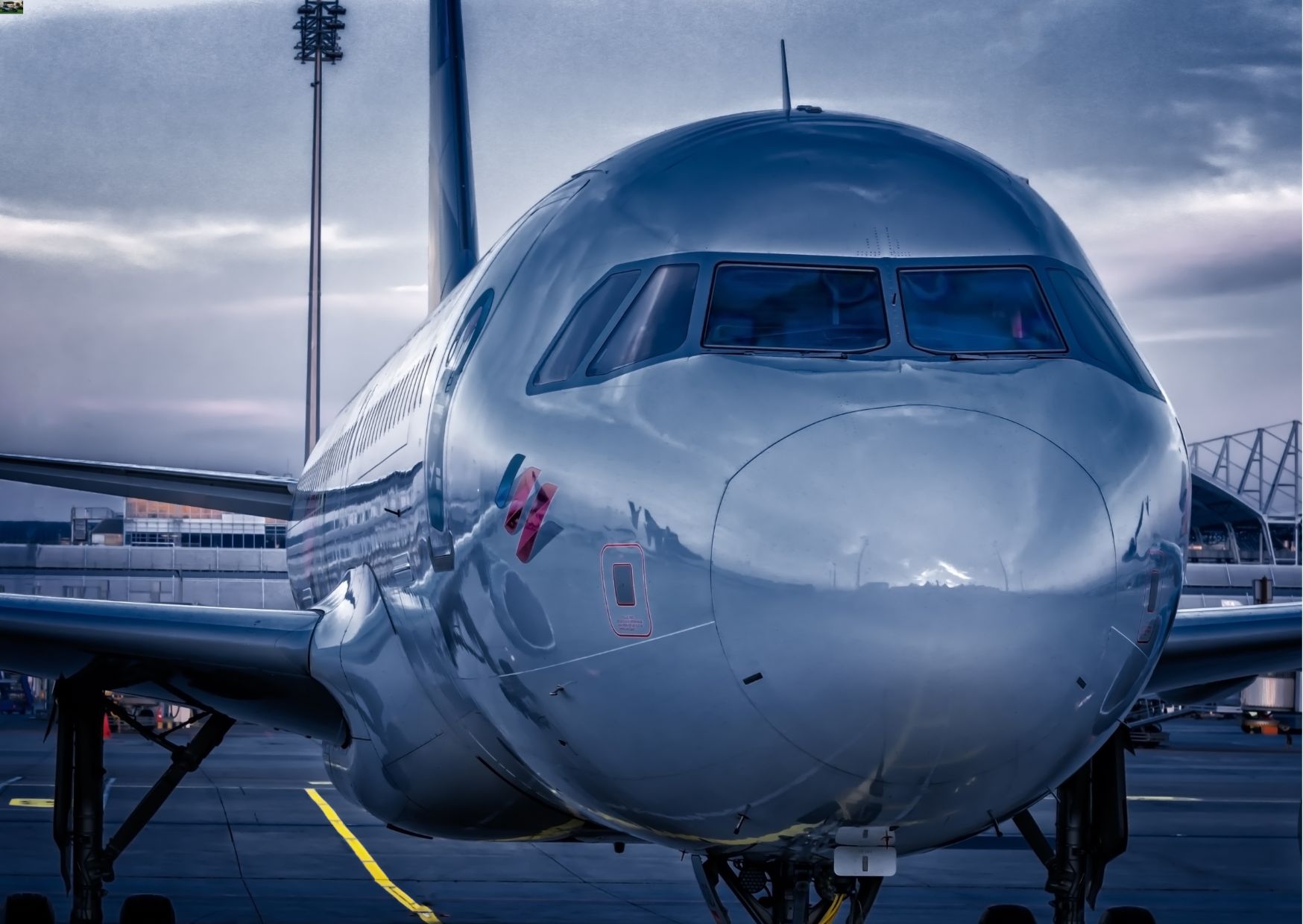To become an air traffic controllers direct the flow of air traffic to safely and efficiently manage national airspace. When you decide to board an aeroplane and take to the skies, air traffic controllers make sure that the aircraft can take off, land and navigate safely through the sky without colliding with other aircraft. This work is fundamental for keeping the skies safe and efficient.
What Are the Main Types of Air Traffic Controllers?
Role and Key Responsibilities
Tower Controllers: Tower controllers handle aircraft on the ground and in the airspace immediately surrounding the airport (including instructing a pilot when to turn left after taking off) and give pilots runway clearances for departure and arrival. In the airspace above the airport, departure and arrival controllers assign routes to equitably share these limited resources. They aim to manage the growing number of flights over congested airways into limited gates in busy airports.
They spend their days in airport control towers tracking arrivals and departures via radar, binoculars and communication systems.
Tower controllers must liaise with teams on the ground, such as fire services, who decide how to extinguish an aeroplane that has crashed, and other airport staff who facilitate the safe continuation of aircraft operations.
Approach and Departure Controllers: Approach and departure controllers manage aircraft as they enter and depart airport airspace, guiding inbound aircraft for landing and outbound aircraft on their initial climb.
Using radar and communications systems, they tell pilots how to climb, descend, speed up or slow down, and turn right or left – all to keep them safely separated and to sequence traffic for the best efficiency.
Approach and departure controllers work in terminal radar approach control (TRACON) facilities, coordinating with the tower controllers and en route controllers to manage traffic flow.
En Route Controllers: Controllers working on the en route phase of a flight track aircraft between two airports at high altitudes. on the en route phase of a flight track aircraft between two airports at high altitudes. En route controllers direct and monitor planes that are flying in high altitudes across longer distances, through sectors of several miles of airspace.
Crews guide each plane with radar and ground-based communication systems that track positions, reroute errant flyers, and allow aircraft to eventually fly apart.
While area controllers work at Area Control Centres (ACCs), they interact with approach and departure controllers and other en route sectors that also help maintain efficient and safe flows of air traffic.

What Does an Air Traffic Controller Do?
Managing Aircraft Takeoffs and Landings
To become an air traffic controller, you permit aircraft for departure and arrival from an airport, assuring pilots that the runway and airspace are clear of other traffic before directly advising them of timing, speed and position for aircraft operations to be carried out safely and efficiently.
Monitoring and Directing Aircraft Within Assigned Airspace
To become an air traffic controller, you keep track of the aircraft in their assigned volume of space through radar and radio systems, feeding the pilots clearances for altitude, speed and heading changes to allow other planes the minimum safe separation.
Communicating with Pilots and Providing Instructions
To become an air traffic controller, you are in almost constant contact with the pilots, updating them on timely information that they would otherwise miss.
Ensuring Safety and Efficiency of Air Traffic
To become an air traffic controller, your role to manage the flow of air traffic in their zone, operate modern technology and procedures to prevent collisions between aircraft, ensure that they separate properly, and keep delays to a minimum.
Responding to Emergencies and Unexpected Situations
To become an air traffic controller, you are trained to handle emergencies and unexpected situations. They provide pilots with critical information on emergencies, inform the emergency response unit, and reroute planes for safety purposes.
Average Air Traffic Controller Salary
Salary Ranges Based on Experience and Location
In the United States, according to airlines.org, a new air traffic controller can expect to make in the range of £25,000-£35,000 per year, depending on their experience and who employs them. After a few years, at the mid-level, controllers can earn between £35,000-£50,000 per year, and senior controllers, especially those in high-stress traffic areas, or those air traffic controllers with specialised expertise can earn £50,000-£100,000 or more per year.
At the US Federal Aviation Administration, entry-level air traffic controllers are paid between $40,000 and $60,000 per year, midlevel controller wages (those with several years of experience) range between $60,000 and $100,000 annually, and senior-level controller pay (those in high-density control facilities or with certifications) can earn $100,000 to $150,000 or more per year.
Comparison of Salaries in Different Regions
To become an air traffic controller, you also deal with according to geographical areas: controllers in London and at other major UK airports, with a higher living cost and a bigger demand for specialist staff than provincial airports, are paid more. For instance, they can get either £5,000 to £10,000 on top of their usual annual salary.
Controllers in states with higher living costs – such as California, New York and Texas – often earn more than controllers in states with lower living costs (such as Florida or Ohio). For example, a controller in New York City or Los Angeles might make far more since they sit in a major aviation hub.
Factors Influencing Air Traffic Controller Salaries
Several factors can influence the salaries of air traffic controllers:
- Experience: Experience is one big factor in salary. Controllers who work more years for an airline have much more experience than a new controller, so it means they are good at controlling and have more chance to have more salary.
- Degrees and Licences: Gaining degrees and certifications is another way to earn a higher salary. To become an air traffic controller with more education and certifications, you earn more money presumably because these workers have been granted recognition by educational institutions, colleges, and commissions.
- Location: The geographical location influences the salaries a lot. To become an air traffic controller in metro areas or high-class living places won’t get a lower salary when compared with the air traffic control in the village.
- Type of Facility: Of course, the type of facility can be a major determining factor. Controllers working in large airports or regional control centres with significant traffic could earn more than those at smaller facilities or in regional centres.
- Demand for Air Traffic Controllers: The supply of air traffic controllers is overall stable, but in some regions that have greater demand there is more competition between personnel to work in that area, so a higher salary is offered to attract or retain them. This can be due to air traffic congestion, regional growth in plane use, and a supply and demand effect owing to competition between employers.

Air Traffic Controller Skills
Technical Skills
- Proficiency in Radar and Communication Systems: To become an air traffic controller, you must also be proficient in radars and communication systems used to monitor and control aircraft. This is vital to the safe and efficient air traffic flow.
- Knowledge of Aviation Regulations and Procedures: To become an air traffic controller, you need to understand and know aviation regulations, procedures and the fundamental principles of ATM safety.
Soft Skills
- Communication: Controllers need good communication skills with pilots, aerodrome workers, fellow controllers and other stakeholders. They should speak clearly and effectively, as well as be able to listen to others and provide feedback.
- Decision-Making: Making important decisions in the heat of the moment comes with the job of an air-traffic controller, tasking them with making smart choices that prioritise safety and efficiency. This calls for good analytical abilities, critical thinking and staying relaxed in the face of pressure.
- Stress Management: This role requires controllers to work in high-pressure situations. The ideal candidate will be able to handle high-stress environments, maintain focus, and manage emotions well.
- Attention to Detail: no aircraft may enter a certain block of airspace until the previous one departs Paying attention to detail is vital because, as the Aero Data tells us: No aircraft may enter a certain block of airspace until the previous one has departed. Traffic controllers must maintain acute attention to detail as they monitor movements, detect conflicts and violations, and control the entry and departure of aircraft.
Air Traffic Controller Tips
Making sure of technology, rules and best practices:
Refers to the fact that airlines are always changing things. Technologies are updated, rules are changed and improved, and best practices are also changing. Controllers must keep up with their trade, not only to keep working but also to stand out. Learning on the job: Through industry magazines, webinars and other kinds of work training.
Networking Through Professional, Peer Organisations:
It’s advantageous to join professional organisations like the Air Traffic Control Association (ATCA), the International Federation of Air Traffic Controllers Associations (IFATCA), and trade publications, such as Air Traffic Management magazine. Professional organisations typically host conventions and trade shows at state and global levels. They also publish books, journals and articles on industry topics. These organisations make networking possible by distinguishing members and their titles while providing access to resources, events and valuable career connections.

Certifications And Continuous Training:
Since certifications and continuous training help an air traffic controller to improve his or her skills, they are very much a part of an air traffic controller’s career. Certifications help an air traffic controller gain an in-depth knowledge of the aviation sector. By obtaining certifications from the aviation authorities or by completing continuous learning as a part of professional development, air traffic controllers can upgrade their knowledge and skills, understand the new trends in the field, and improve their career opportunities.
Practical experience:
Internships and simulation training Air traffic management careers demand extreme focus and accuracy. While theoretical knowledge is important for air traffic controllers, gaining practical experience through internships and simulation training is essential. During internships, aspiring controllers will get a taste of the real working environment and develop informed opinions about the type of work they want to do. Yet, to truly make air traffic management skills compatible with real-world situations, simulation is necessary. By simulating the busy and stressful environment of an airport, simulation training exposes air traffic controllers to the challenges they will face in their careers.
Air Traffic Controller Requirements
Educational Requirements
- High School Diploma or Equivalent: Getting the job requires a high school diploma or equivalent. Courses in mathematics, physics and aviation provide good preparation for further training.
- Relevant Coursework in Aviation, Mathematics, and Physics: Courses in Aviation, Mathematics and Physics are of great help toward becoming an effective air traffic controller as they directly develop skills needed for air traffic management
Certification Requirements
- Federal Aviation Administration (FAA) certification: To become an air traffic controller in the United States must be certified by the Federal Aviation Administration (FAA). To obtain certification, controllers must complete a training programme administered by the FAA and pass a series of certifying exams and evaluations.
- Continuous Professional Development: Undergo relevant workshops, seminars and additional training to develop skills and stay abreast with industry trends. This is a must to retain certification.

Experience Requirements
- Internships and Entry-Level: To become an air traffic controller, practical experience is a vital part of the process internships and entry-level provide real-life training in air traffic management, which includes developing the critical skills along with an understanding of job responsibilities that come with on-the-job experience.
How to Become an Air Traffic Controller
Completing Relevant Education
- A High School Diploma: The first step to an air traffic controller career is to graduate high school and earn a diploma or equivalent. You will reap the greatest benefit from maths, physics and aviation classes while you’re still in school.
- Specialised Training: Once high school has been completed, prospective air traffic controllers must partake in Specialized Training courses. These training programmes focus on air traffic management, aviation regulations, and communication systems.
Gaining Practical Experience
- Internships and Simulation training: internships or simulation training is a vital practical experience of proposed skills attention and critical thinking skills work with real air traffic scenario realism simulating specific real air traffic radar images and tasks. focusing on specific real air traffic branches and parts in the controller’s experience. These lessons plan for students to acquire professional air traffic management skills and knowledge.

Obtaining Certification
- FAA Certification: To become a controller in the US, a candidate must earn certification from the Federal Aviation Administration (FAA). This usually involves following a training programme (specific to the FAA-contracted training academy) that is approved by the FAA, passing both written and practical examinations, as well as setting aside a period of relevant experience.
- Continuous Professional Development: are required to keep up-to-date by taking workshops, and seminars and continuing study.
Networking
- Joining Professional Organizations: For this, I start by joining professional organisations like the Air Traffic Control Association (ATCA), formerly known as the National Air Traffic Controllers Association (NATCA), or the International Federation of Air Traffic Controllers’ Associations (IFATCA). Joining such groups leads to a sense of belonging and allows one to network with PPRC (peer, salient position, reference) and be part of an association that offers events, tools and public relations.
- Attending Aviation Industry Events and Conferences: Aviation industry events, conferences, workshops and seminars are excellent ways of networking and fostering contacts within the industry. Networking helps organise and develop relations, learn from experts and master professionals and find a job. It gives a chance to share knowledge and get informed about air traffic management’s recent trends and novelties.
Frequently Asked Questions (FAQ)
1. Why should you become an Air Traffic Controller?
There can be no question that becoming an Air Traffic Controller can be a really exciting and rewarding career path. You will control every air movement to prevent mid-air collisions and accidents, you will work on the leading edge of a challenging, intense, and hectic environment, and, most importantly, you will help to make air travel safer and more effective. As an ATC, you will be recognised, not only by other experts but also by the general population and all of your friends. It is a job with great job security and attractive compensation.
2. Is Air Traffic Control a Good Career Choice for You?
If you’re personable and like a challenge, have a passion for aviation, strong communication skills, and an eye for detail, then air traffic control could be the career for you. It suits people with strong problem-solving skills and the ability to make good decisions under pressure. Does this sound like you? Cracking the belt above your seat will be the least of your worries.
3. Air Traffic Controller Salaries
Wages or salaries for air traffic controllers vary depending on the level of experience, location in the country, and the kind of facility one works in. By general rule, beginning controllers in the UK can anticipate between £25,000 and £35,000 a year, while beginning controllers in the US can expect between $40,000 and $60,000. Experienced, mid-level controllers can expect between £35,000 and £50,000 in the UK, and between $60,000 and $100,000 in the US. Senior-level controllers at especially high-traffic control facilities or with advanced certifications can expect between £50,000 and £100,000 in the UK, and between $100,000 and $150,000 in the US.
4. Which Qualifications Can Help with a Career in Air Traffic Control?
Include your high-school diploma or equivalent, and any relevant coursework – in aviation subjects, mathematics or physics all help. Any professional qualifications, such as FAA certification in the US or CAA certification in the UK, will give you a leg up.
5. Do I Need to Be an Experienced Air Traffic Controller to Get Started?
No, you don’t have to have experience working as an air traffic controller already. There are extern, intern and trainee positions available, which provide practical experience and training in the field. You can do some of your training as an air traffic control intern or trainee and then look to transition into a career as an air traffic controller.
6. Air Traffic Controller Career Outlook
Given the high demand for services in all segments of the aviation industry, the prospects for this job are excellent. The number of jobs is expected to pick up fast with the increasing demand for air travel. Following that there is also a high demand for skilled air traffic controllers. Attractive starting salaries and excellent job security are making the industry very lucrative. The evolution of the air traffic controller profession towards the air space controlling aspect of the job offers attractive prospects for senior and specialist positions. Technological advancements associated with the huge increase in air transport volumes are creating new job opportunities as well.
7. Air Traffic Controller Hierarchy and Progressing Within the Role
Common air traffic controller career path starts from entry-level positions such as air traffic control trainee/intern. In here, we have a crash course, so, they’ll be talking about the rules and regulations as well as the essential skills that an air traffic controller should have. Based on experience and further training, professionals are promoted to mid-level positions such as tower controller / en route controller. Higher-level jobs include senior controller or supervisor/manager. To gain some advanced positions, we need to add some special certifications, to ensure that we have the best accident prevention performance.
8. Air Traffic Controller Exit Options and Opportunities
Trajectories out of air traffic control go in many directions and beyond the world of air traffic control, such as aviation management, safety analysis, aviation consultancy and training. An experienced controller can thus move into other work, for example, as an aviation safety inspector, air traffic control instructor, aviation manager or safety consultant. Still, some will pursue a higher degree and become an academic and researcher in the field of aviation studies.


